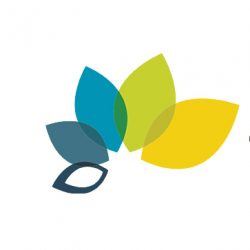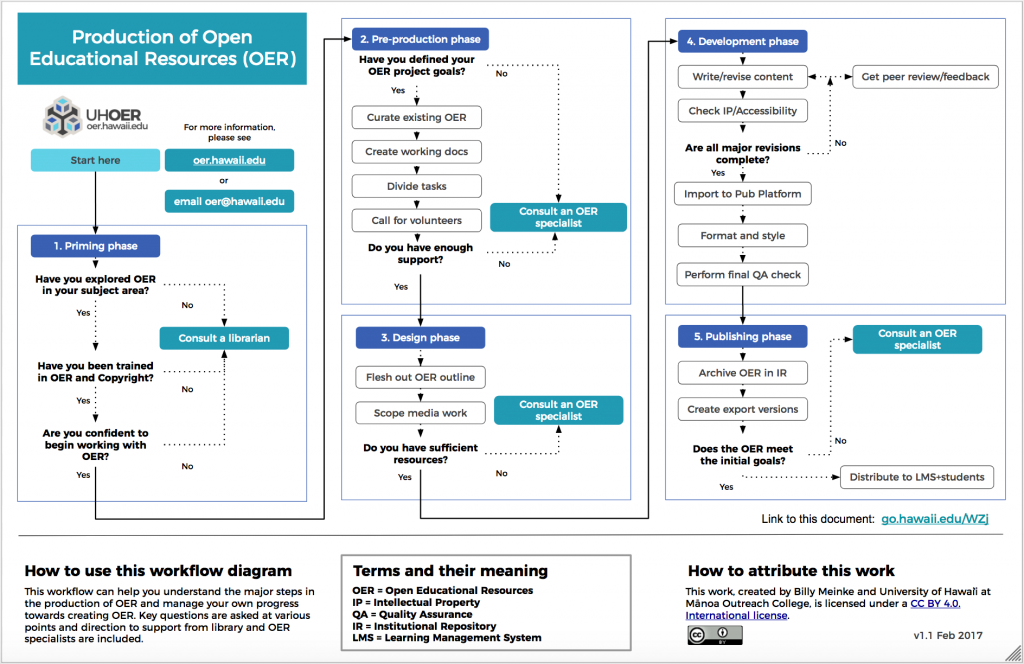Learning Objectives
By the end of this lesson, you will be able to:
- Identify the main steps of an OER adoption or creation process
Introduction
Each OER project is different, and rarely is an OER adoption a turn-key process. While OER textbooks exist for many high-enrollment courses taught at higher education institutions, the pedagogical design (or teaching style) and student population will vary.
Still, we can look to instructional design frameworks to understand what it takes to adapt or create OER content to suit a course or learning experience. The following OER production framework represents the major steps that OER adoptions and creations typically go through.
Earlier draft (w/comments): go.hawaii.edu/jZC
Current version: go.hawaii.edu/WZj
Priming phase
At this step, we begin by asking a few key questions to gauge the OER knowledge and skills of those who are interested in taking on a project. Have you explored OER content in your subject area? Have you been though any previous training for work with OER in the past? If not, direction to training resources and the appropriate support staff is the next step, unless the person is confident that they can jump right in and begin working.
Pre-production phase
This phase involves the curation of existing resources that may be applicable to the OER adoption as well as using planning documents to get an idea of what would be involved in the project. No new content should be adapted in this step, but a skeleton outline and other time-and-task-based project management documents should be prepared.
Design phase
This step is the last planning phase before work on the actual OER content begins. Project outlines and skeleton documents are fleshed out, and existing OER are fit into places where they are believed to be applicable. Any visual/graphic design work and processes that require assistance from an instructional designer are included here.
Development phase
This phase deserves an entire workflow of its own, simple because this is where the most time is spent on OER projects. Existing OER that are being adapted or modified go through revision and review in a closed loop until they are in a place where they require only minor changes or copyedits. Checks for intellectual property (which CC license is on the content, and have we appropriately attributed everything?) are done, as well as checks for accessibility (is content semantically formatted, images including alt-text, etc)? Content here is typically drafted in Google Docs or another rich content editor (Word, OpenOffice) and are then ported into the publishing platform (Pressbooks for UH).
Publishing phase
The final phase involves the “publishing” aspects including creating export versions, archiving the editable files (.doc, .xml, etc) and delivery format (PDF, eBook) in the institutional repository. The new adapted or original OER content is then disseminated to learners and shared our with the open community.


